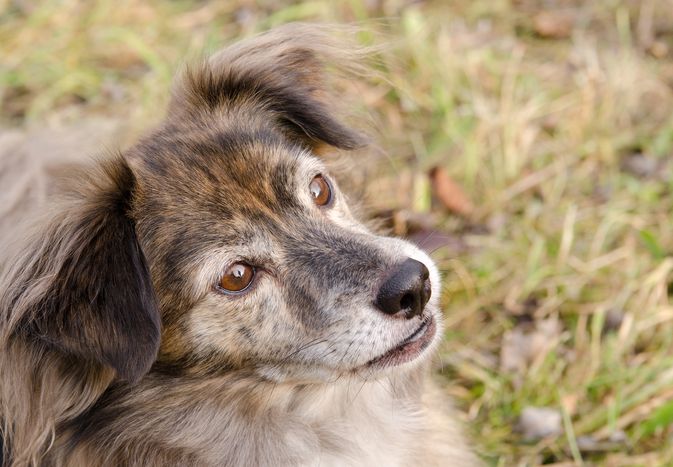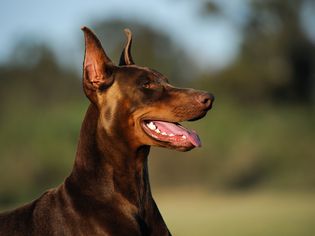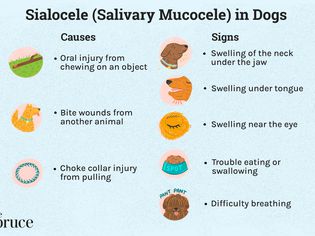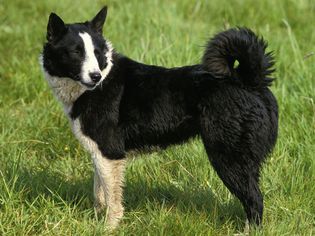The Sussex spaniel is a medium-size sporting dog breed from England with a medium-length, slightly wavy coat that comes in the breed’s trademark golden liver color. Overall, this hunting dog has a low, long build with short legs, which allow it to move through undergrowth to flush out game. Its ears are fairly long and hang downward with plenty of wavy fur. And its soft hazel eyes and heavy brows contribute to a somewhat frowning expression, which contradicts the breed’s typically cheerful demeanor.
Breed Overview
Group: Sporting
Height: 13 to 15 inches
Weight: 35 to 45 pounds
Coat: Medium-length, double coat
Coat Color: Golden liver
Life Span: 13 to 15 years
Temperament: Affectionate, companionable, even-tempered
Hypoallergenic: No
Origin: England
Characteristics of the Sussex Spaniel
Sussex spaniels generally have a sweet and playful temperament with their family, though they can be moderately wary of strangers. They tend to be easygoing in the house as long as their exercise needs are met. A stubborn streak also can help to shape their personality, though they still take pretty well to training.
| Affection Level | High |
| Friendliness | Medium |
| Kid-Friendly | Medium |
| Pet-Friendly | Medium |
| Exercise Needs | Medium |
| Playfulness | High |
| Energy Level | Medium |
| Trainability | Medium |
| Intelligence | Medium |
| Tendency to Bark | Medium |
| Amount of Shedding | Medium |
History of the Sussex Spaniel
The Sussex spaniel has its roots in the Sussex county of southern England. During the 1700s, residents of this region worked to develop a sturdy gun dog with short legs. They needed the dog to be able to navigate the area’s heavy soil and dense foliage. They also bred the dog to be more vocal than most spaniels, so the hunters could keep track of it even if it disappeared into thick undergrowth.
The breed was among the first to be recognized by the Kennel Club of the United Kingdom in the late 1800s. However, it dropped in popularity around the time of World War II and nearly went extinct.
The Sussex spaniel still remains rare today, and it's most common in the United Kingdom and North America. The American Kennel Club first recognized the breed in 1878.
Sussex Spaniel Care
Sussex spaniels don't require an excessive amount of exercise. And their grooming needs also are pretty simple. Training and socialization should begin at a young age to help encourage good manners.
Exercise
Give Sussex spaniels at least an hour of exercise per day, which should keep them calm in the house. Walking, hiking, and swimming all are ideal activities to help your dog burn some energy. However, Sussex spaniels should not engage in strenuous exercise until they are fully grown to prevent them from damaging their growth plates.
Always keep your dog on a leash or in a securely fenced area when outside. This breed has a high prey drive and might ignore your recall commands when it wants to chase perceived prey.
Grooming
Brush your Sussex spaniel one to two times per week to remove loose fur and prevent tangles and mats. The coat does not need to be cut, though you can trim fur that grows on the bottom of your dog’s paws to help prevent it from slipping. Expect periods of higher shedding often in the spring and fall as the weather changes, during which you'll have to brush more frequently.
Bathe your dog roughly every month, depending on how dirty it gets. But check its ears at least weekly for wax buildup, debris, and other abnormalities. Also, be sure to dry the ears well whenever they get wet. Check to see whether your dog needs its nails trimmed monthly, and aim to brush its teeth daily.
Training
Begin training and socialization ideally when your Sussex spaniel is a puppy to help prevent bad habits from forming. This breed can be stubborn when it comes to training. Always use positive-reinforcement training methods, as Sussex spaniels are sensitive to harsh corrections. Use lots of praise (and treats) to encourage good behavior.
Also, aim to give your Sussex spaniel lots of positive experiences with different people and other dogs. This can help to curb its somewhat reserved nature around strangers.
Common Health Problems
Sussex spaniels are fairly long-lived dogs, but they are prone to some hereditary health issues, including:
- Pregnancy difficulties
- Heart problems
- Bloat
- Cancer
- Pyruvate dehydrogenase deficiency (a metabolic disorder)
Diet and Nutrition
Always have fresh water available for your dog. Feed a quality canine diet with balanced nutrition, typically via two measured meals per day. However, because this breed is prone to bloat and potentially life-threatening stomach twisting, which often is the result of eating too quickly, you might want to consider feeding smaller, more frequent meals.
Discuss the appropriate amount and type of food with your vet to make sure you’re meeting your dog’s individual needs. Nutrition requirements can change based on age, activity level, and other factors.
Where to Adopt or Buy a Sussex Spaniel
The Sussex spaniel is a rare dog breed. But it’s still not impossible to find one at an animal shelter or rescue organization, though you might have to wait some time and travel a great distance. See whether you can get your name on a breed wait list if possible. For a puppy from a reputable breeder, expect to pay around $1,500 to $2,600 on average.
For more information to help connect you with a Sussex spaniel, check out:
- Sussex Spaniel Club of America
- Sussex Spaniel Rescue
Sussex Spaniel Overview
Typically mellow in the house
Affectionate
Fun-loving
Can be stubborn about training
Prone to pregnancy problems and other health issues
High prey drive
More Dog Breeds and Further Research
As with any dog breed, do thorough research on the Sussex spaniel before bringing one home. Talk to breed owners, rescue groups, responsible breeders, and veterinary professionals to determine whether the breed will fit with your lifestyle.
If you’re interested in similar breeds, check out:
- Clumber spaniel
- Field spaniel
- English cocker spaniel
There’s a whole world of potential dog breeds out there—with a little research, you can find the right one to bring home!
- Are Sussex spaniels good family dogs?
Sussex spaniels are moderately tolerant of children in general. With proper training and socialization, they can be good with respectful older children. But they might not put up with rough handling from young kids.
Are Sussex spaniels aggressive?Well-trained and socialized Sussex spaniels might be somewhat reserved around strangers. But that typically does not turn into aggression.
Are Sussex spaniels good apartment dogs?Sussex spaniels can do well with apartment living as long as they receive enough exercise and playtime every day. In general, the breed is fairly good at adapting to changes in living conditions.








